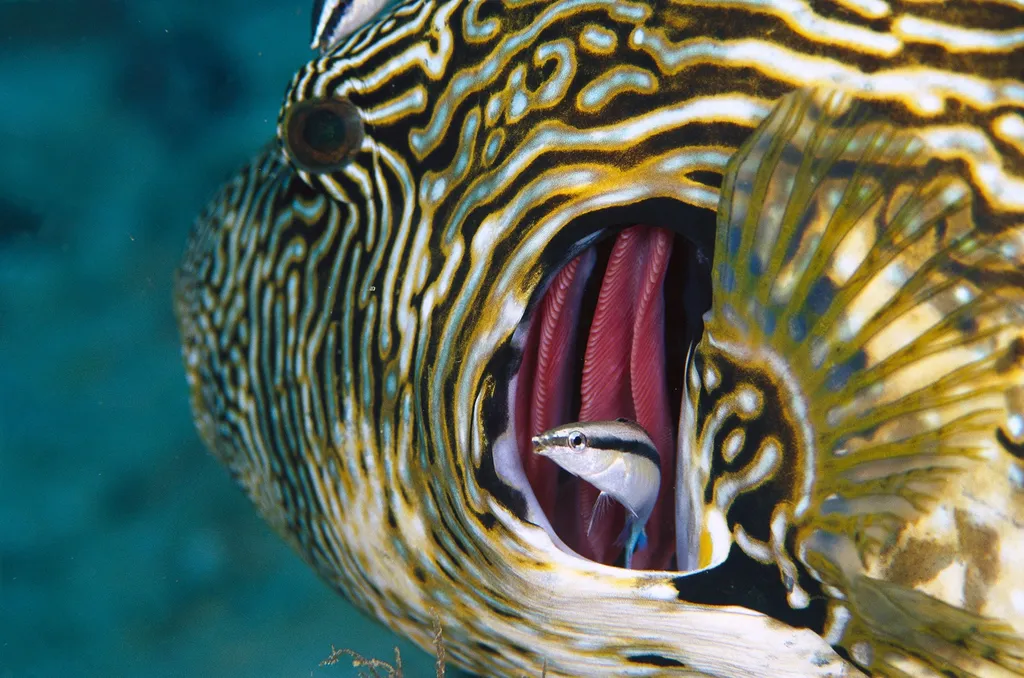In the depths of the National Museum of Natural History of Ukraine (NMNH), a treasure trove of marine life is meticulously cataloged, offering a window into the underwater world of wrasses, a family of fish known for their vibrant colors and complex behaviors. Leonid Manilo, a researcher at the NMNH, has recently published a comprehensive study in the journal *Geo&Bio* (translated from Ukrainian as *Geo&Bio*), shedding light on the museum’s collection of Labridae, commonly known as wrasses. This research not only provides a detailed inventory of the species but also highlights their distribution and conservation status, offering valuable insights for marine conservation and the energy sector.
The study reveals that the NMNH’s ichthyological collection includes 25 species of wrasses, comprising 2029 specimens spread across 152 museum storage units. These specimens were collected from various marine basins, including the Indian Ocean and the Atlantic Ocean, with a significant representation from the Black and Azov Seas. “The collection is a testament to the biodiversity of these regions and provides a crucial baseline for understanding the ecological health of our marine environments,” Manilo explains.
One of the most striking findings is the absence of the green wrasse (Labrus viridis) in the collection, a species listed in the Red Book of Ukraine. This omission underscores the need for targeted conservation efforts to protect endangered marine species. “The green wrasse is a critical indicator of marine health, and its absence in our collection is a wake-up call for more robust conservation measures,” Manilo notes.
The study also highlights the decline of the Goldsinny wrasse (Ctenolabrus rupestris) in the northwestern part of the Black Sea, a species that has not been recorded in catches since the mid-1970s. This decline is a cause for concern, as wrasses play a vital role in maintaining the balance of marine ecosystems. “The disappearance of the Goldsinny wrasse could have cascading effects on the marine food web, impacting commercial fisheries and the overall health of the Black Sea,” Manilo warns.
For the energy sector, understanding the distribution and conservation status of marine species is crucial for minimizing the environmental impact of offshore activities. The data provided by Manilo’s research can inform the development of sustainable practices, ensuring that marine biodiversity is preserved while meeting the energy demands of the future.
The research also identifies three species of wrasses with conservation status: the Goldsinny wrasse and the sublet (Symphodus rostratus), both listed in the Red Book of Ukraine, and the hogfish (Lachnolaimus maximus), which is vulnerable according to the International Union for Conservation of Nature and Natural Resources (IUCN). “These findings emphasize the importance of international cooperation in marine conservation, as many of these species transcend national boundaries,” Manilo states.
As the world grapples with the challenges of climate change and biodiversity loss, studies like Manilo’s are invaluable. They provide a roadmap for protecting marine ecosystems and ensuring the sustainable use of marine resources. “Our research is just the beginning. It is a call to action for scientists, policymakers, and industry leaders to work together towards a more sustainable future,” Manilo concludes.
Published in *Geo&Bio*, this research not only enriches our understanding of marine biodiversity but also paves the way for innovative conservation strategies. As the energy sector continues to expand into offshore territories, the insights gained from this study will be instrumental in shaping policies that balance economic growth with environmental stewardship. The future of our oceans depends on the actions we take today, and Manilo’s work is a significant step in the right direction.

